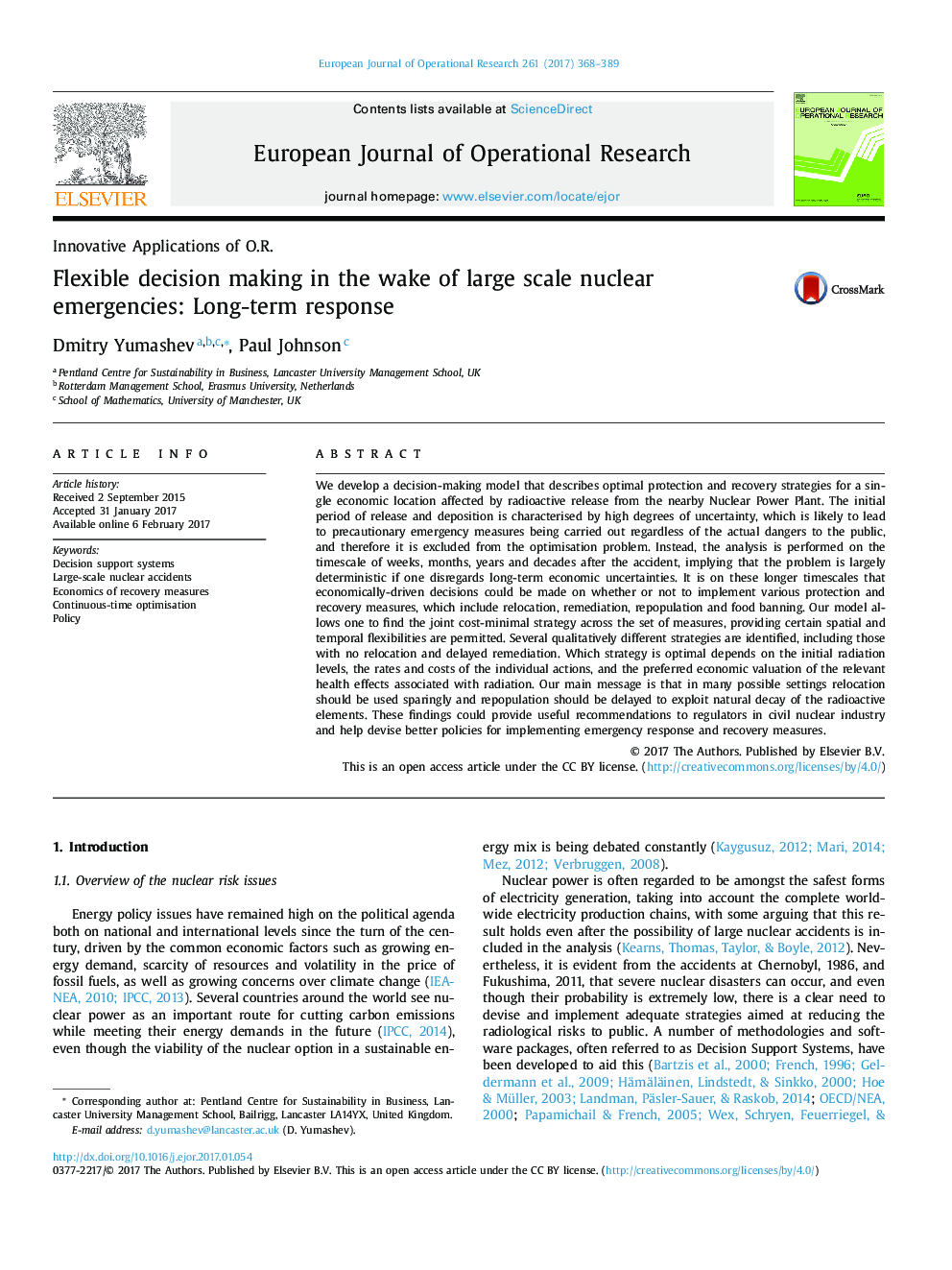| Article ID | Journal | Published Year | Pages | File Type |
|---|---|---|---|---|
| 4959562 | European Journal of Operational Research | 2017 | 22 Pages |
â¢We model cost-minimal long-term recovery strategies following a nuclear accident.â¢Greater spatial and temporal flexibilities are required to make optimal decisions.â¢Three contrasting problem settings are explored under two levels of radiation.â¢Several unique strategies exist depending on radiological and economic parameters.â¢Relocation should be used sparingly and remediation should often be delayed.
We develop a decision-making model that describes optimal protection and recovery strategies for a single economic location affected by radioactive release from the nearby Nuclear Power Plant. The initial period of release and deposition is characterised by high degrees of uncertainty, which is likely to lead to precautionary emergency measures being carried out regardless of the actual dangers to the public, and therefore it is excluded from the optimisation problem. Instead, the analysis is performed on the timescale of weeks, months, years and decades after the accident, implying that the problem is largely deterministic if one disregards long-term economic uncertainties. It is on these longer timescales that economically-driven decisions could be made on whether or not to implement various protection and recovery measures, which include relocation, remediation, repopulation and food banning. Our model allows one to find the joint cost-minimal strategy across the set of measures, providing certain spatial and temporal flexibilities are permitted. Several qualitatively different strategies are identified, including those with no relocation and delayed remediation. Which strategy is optimal depends on the initial radiation levels, the rates and costs of the individual actions, and the preferred economic valuation of the relevant health effects associated with radiation. Our main message is that in many possible settings relocation should be used sparingly and repopulation should be delayed to exploit natural decay of the radioactive elements. These findings could provide useful recommendations to regulators in civil nuclear industry and help devise better policies for implementing emergency response and recovery measures.
